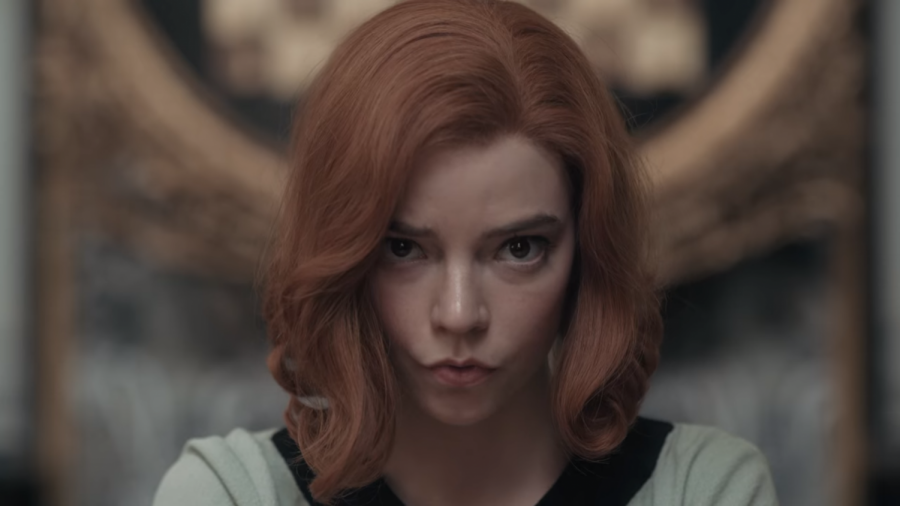Review of “The Queen’s Gambit”
Anya Taylor-Joy stars as Elizabeth Harmon in The Queen’s Gambit. (Netflix, 2020)
When I was nine years old, I was in a car accident much like the one that orphaned Elizabeth Harmon, the protagonist of “The Queen’s Gambit,” at the same age. It was late at night, and the rain pattered on the metal roof of our home- a repurposed barn we rented from the owners of a puppy mill. My mom came down the stairs asking me if I wanted Baskin Robbins, and I was too young to recognize drunkenness. I was too young to appreciate that I could walk home in the freezing rain and darkness, myself and my mother alive, just like Harmon was too young to understand the ramifications of taking that little green pill at Methuen’s Home for Girls.
Netflix’s chess epic opens in that dreary orphanage. It’s where the show establishes the two main threads that follow Harmon through the rest of her journey: her superhuman talent for the game of chess and her all-too-human addictions to drugs and alcohol. It only takes watching the janitor play against himself in the basement for the orphan to pick up how each piece moves across the board. Impressed, he teaches her more; when Harmon saves up the pills the orphanage’s doctors give her to “stabilize her mood,” she swallows them at night and plays out entire games on the ceiling of her dormitory.
These games on the ceiling are an iconic feature of the show, and they’re a brilliant usage of special effects in a series where you might expect their absence. They’re also far from the only instances of visual splendor: the locations Harmon travels to for her tournaments are extravagant and beautifully captured. If I didn’t know better, I’d think a time machine was used to capture Paris, Mexico City and Moscow in the 1960s with high-definition cameras. The deep orange glow of street lamps in the night, the glittering porcelain in luxury hotels, and the grandeur of Soviet chess halls arrest the eyes. The beauty on the screen is hypnotic. Often, when a player comes to the table, we get a close-up of their face: a window into their emotions. When the action starts, kings and pawns move at the periphery of our sight, giving center stage to the competitors. The camera is telling you to focus not on the pieces, but the people moving them.
There’s an anecdote at one point in the story that gets to the heart of what makes it tick. In games where computers play chess against one another, one character says, it’s always white that wins because it goes first. It’s the human element that makes the game interesting; we are not machines. Likewise, it’s not the mechanical operations of chess, the play-by-play analysis, that’s important to the Queen’s Gambit. It’s the show’s commitment to the humanity of its characters. Harmon’s opponents are her rivals, but they aren’t villains- there are no villains here, but for the kind that lives in pills and bottles. We come to love her and her friends, even as she pushes them away and they act callous or stupid. There are cruel and evil people in the story, to be sure- but they’re unimportant.
The Queen’s Gambit is one of those shows that I want to tell my mom about. Then I remember that I can’t, and I feel that emotion- grief. It’s among the emotions that constitute the viscera of the human experience: grief, triumph, despair and others. They can be like the thunder of a car crash or the patter of rain on a roof. Elizabeth Harmon’s story will invite you into every one, as will many other things. Always accept that invitation.

What interests you about journalism?
I love that I can get unfailingly interesting stories from just talking to regular people about their lives,...










Kelsey • Mar 13, 2021 at 10:32 am
This is beautifully written
Lena • Mar 11, 2021 at 10:17 am
great article, Colin!